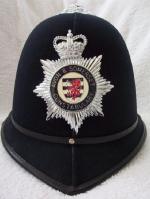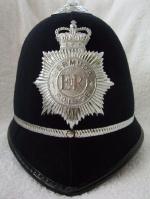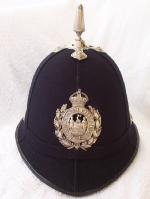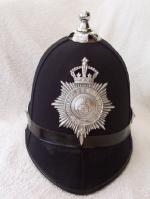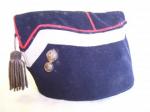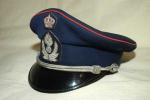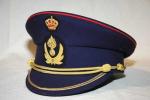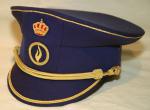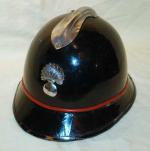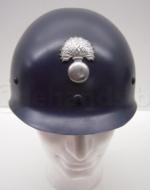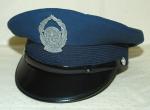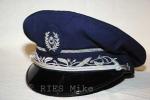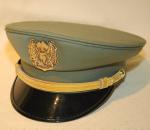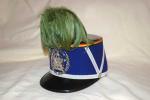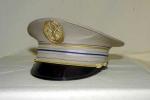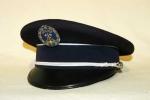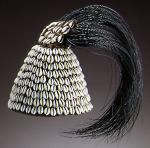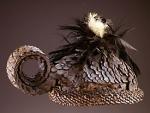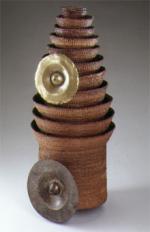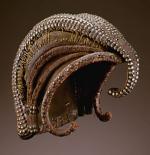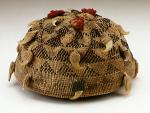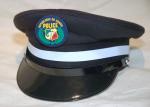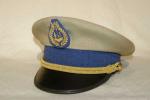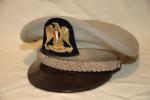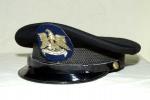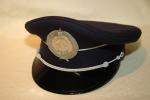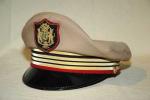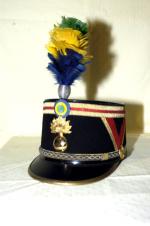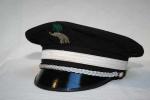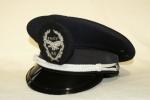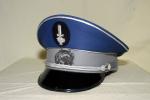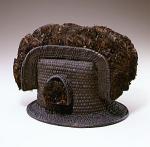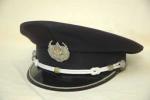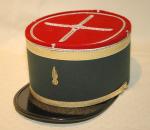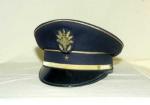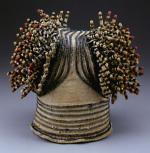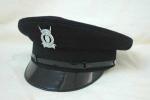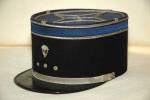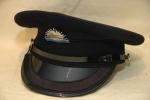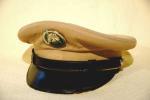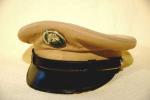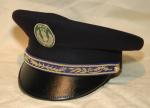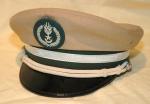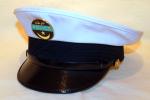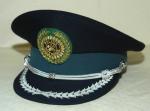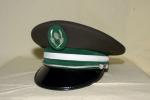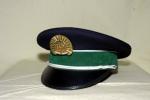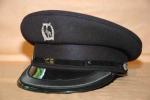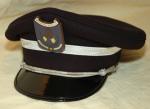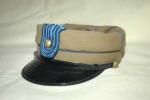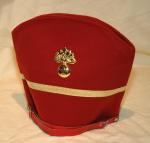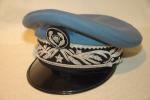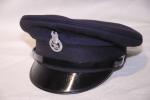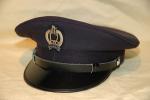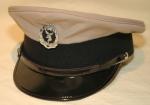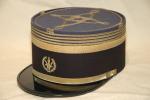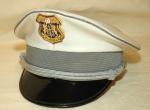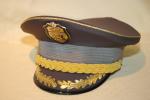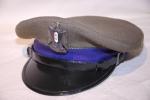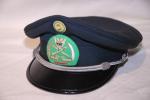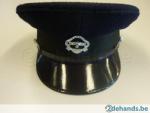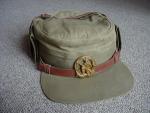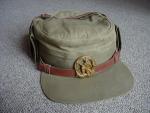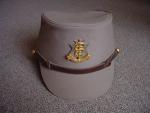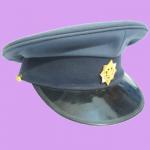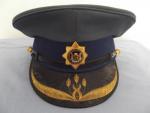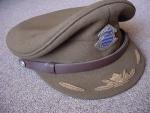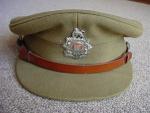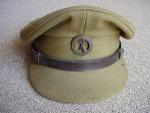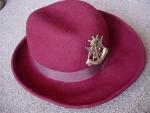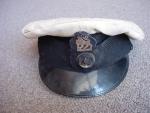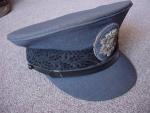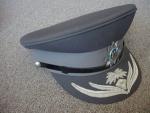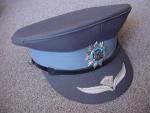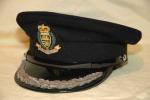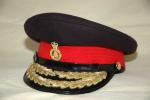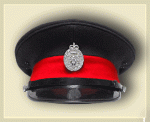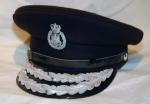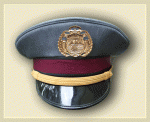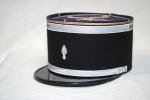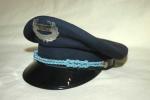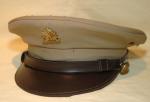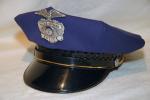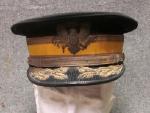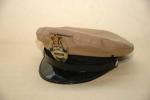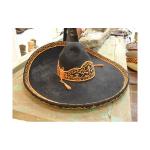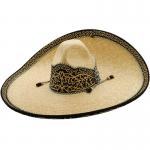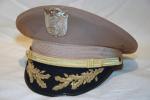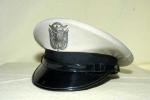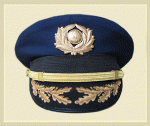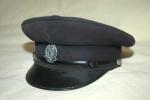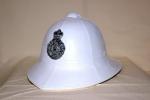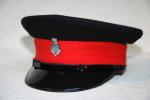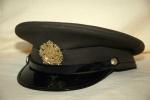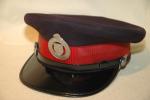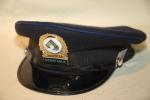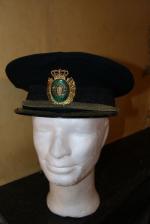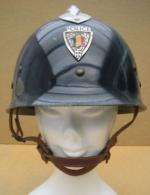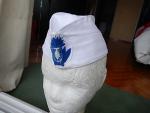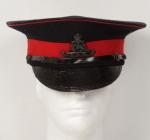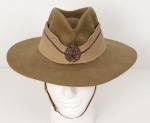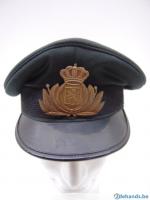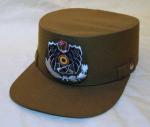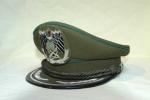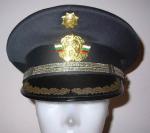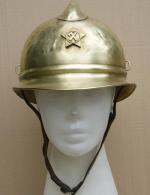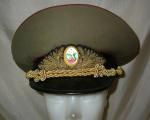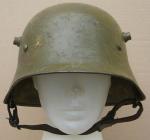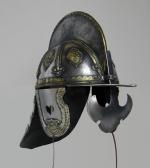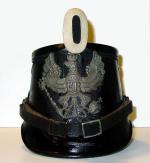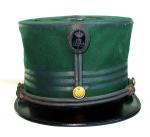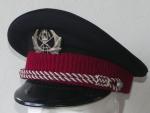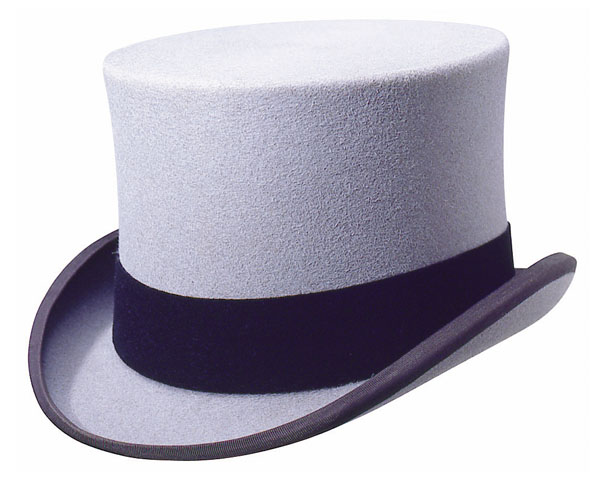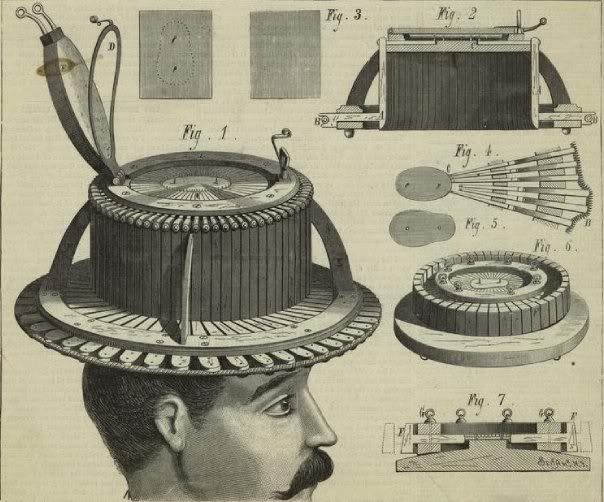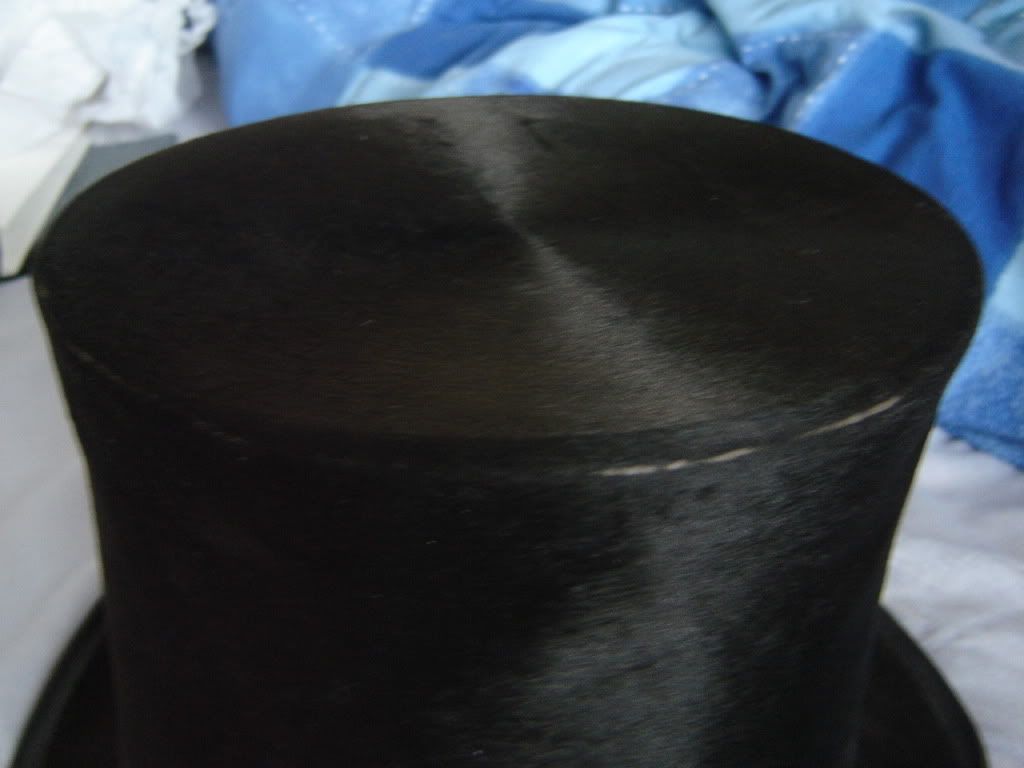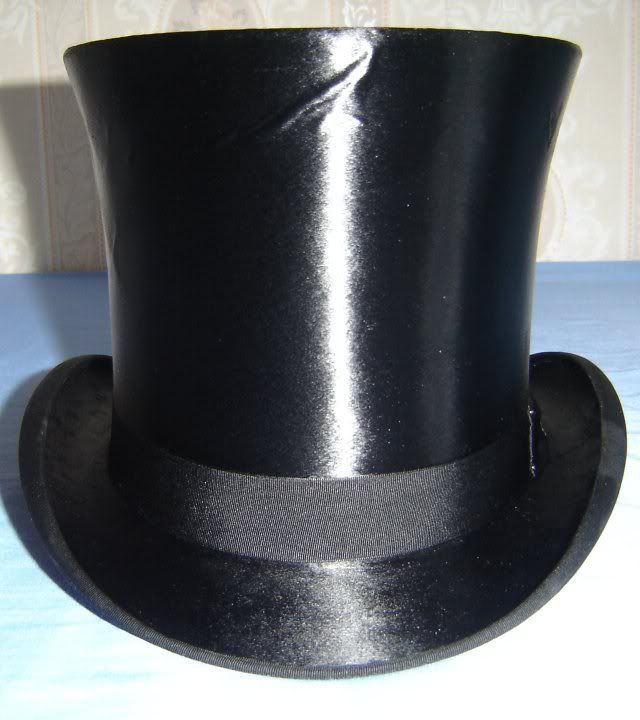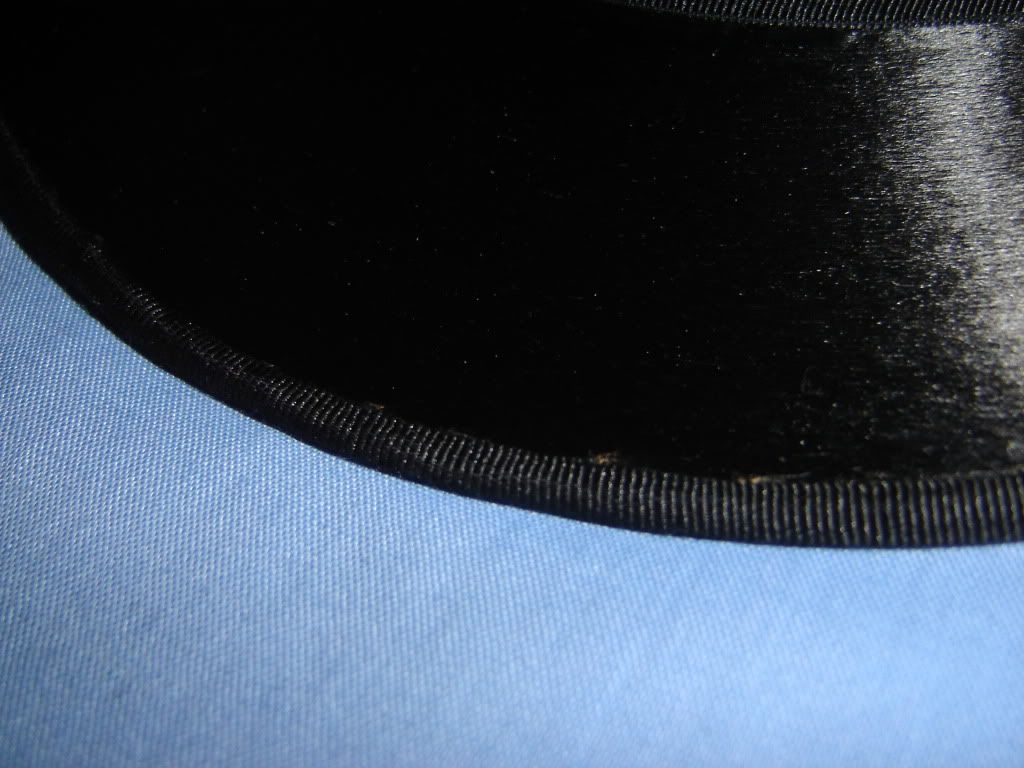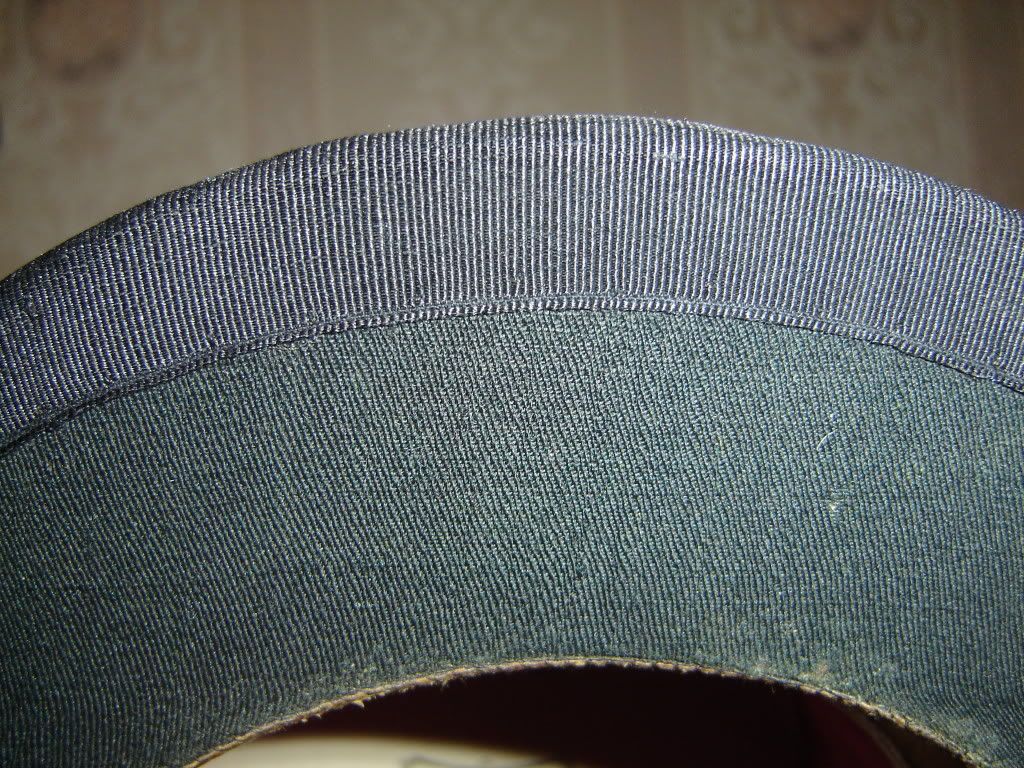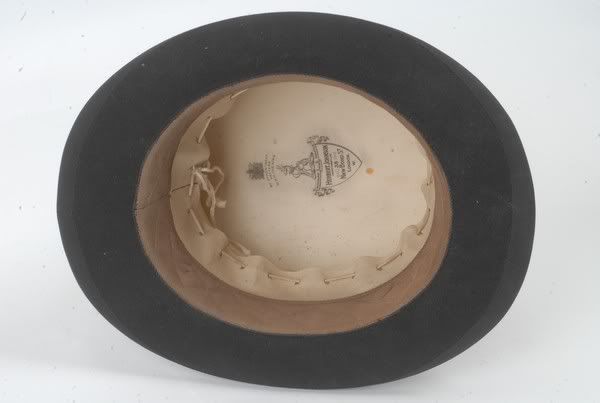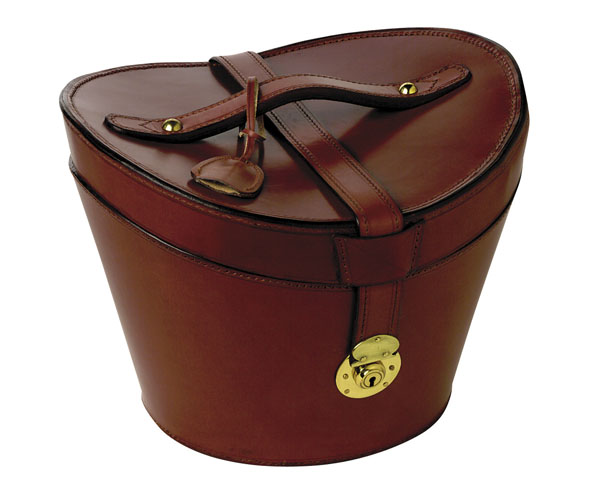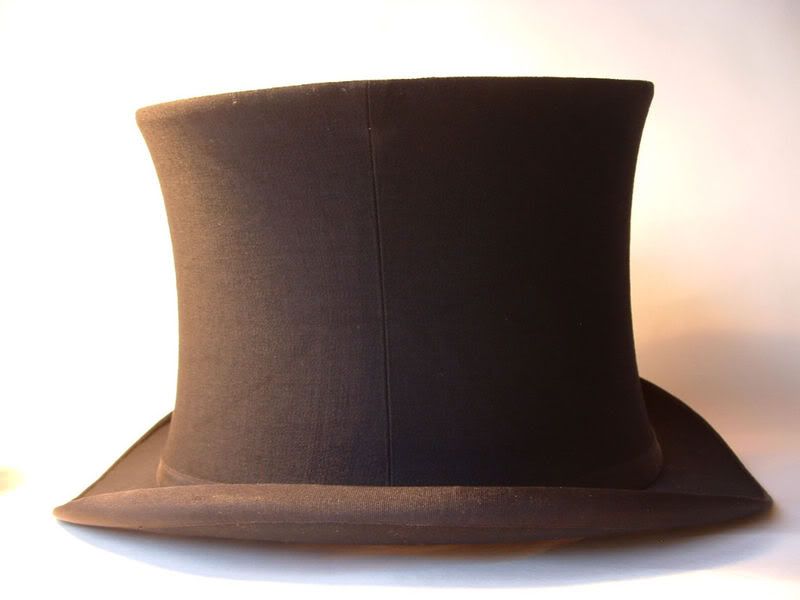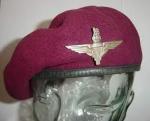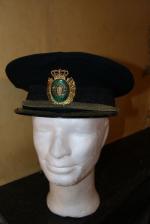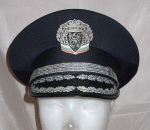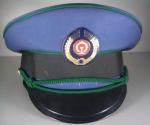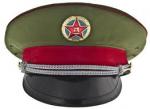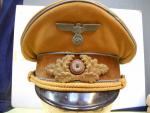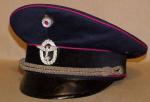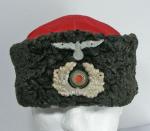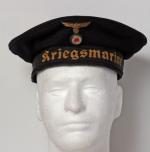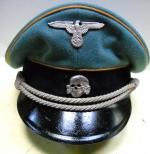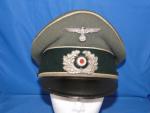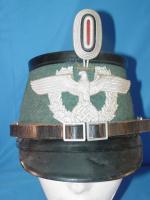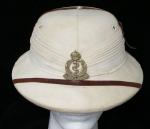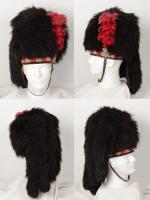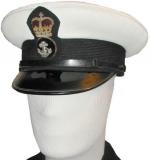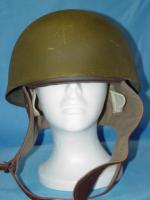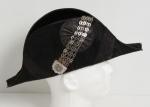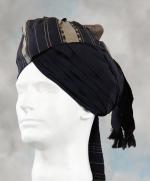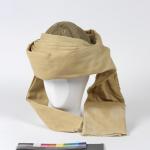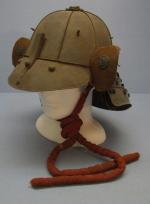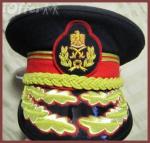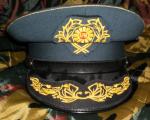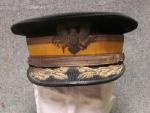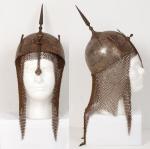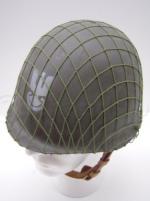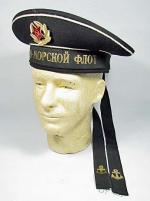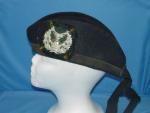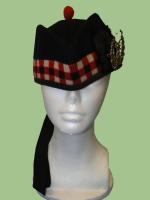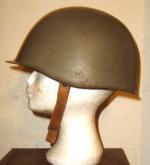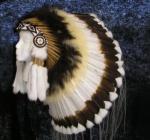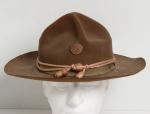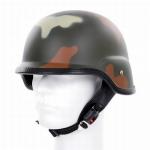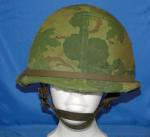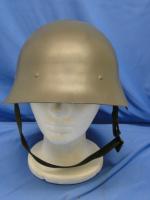Most recent update: 30th April 2013
The top hat supposedly first appeared in 1797 on the streets of London. A story goes that an English hatter, a Mr. Hetherington, literally caused a riot on the street and was fined a tidy sum of £500 for disturbing the peace for wearing a hat that he invented (i.e. a topper)! This has since been proven as a myth and the person that really invented the top hat was actually a Frenchman. George Dunnage (a master hatter from Middlesex) is credited to have introduced the hat to Britain around 1793. Regardless of its origins, the top hat had gained popularity and by the Regency Period, it was de rigueur for everyday wear for the English gentleman (who would eventually be the only ones in the world who would still wear and value the hat long after all other foreigners have abandoned its use, even for formal dress that required it). Indeed, a gentleman would risk being spat at in the street if he did not wear a hat in the past!

Fred Astaire wears a silk plush topper whilst the men in the background wear silk grosgrain opera hats. Note how he wears it at a jaunty angle (the thespians slant). The more elegant (and proper) way is to wear it dead straight, especially in formal settings.
How times have changed. Now, you would find it difficult to see anyone wearing a hat these days as the continuous de-formalisation of dress and manners slowly creep in. The slobbiness has set in and in due course, T-shirt, shorts and flip-flops would be considered too formal for business wear as we let it all hang loose and adopt the not boovered attitude But I digress.
The only places where top hats can be worn are few and far between. It is restricted to the most formal dress codes of the land. You will need it at Royal Ascot, investitures, weddings, balls, galas, operas and any formal event that demands morning dress or white tie. Whatever you may wear with a topper, an inferior one would definitely make you look like youre in a costume. Indeed, inferior toppers can be spotted from a mile away. Plus, you must wear the right kind of topper that is appropriate to your dress and occasion otherwise it will definitely be costume!
Here I put forward a guide to sourcing, buying and wearing a topper. Do not panic buy a topper (like they did in an episode of the British version of The Apprentice where they headed to the most expensive place possible); do your research, wade through all that is available and purchase wisely. You could get a bargain easily if you know how.
.
Types of top hats
Contrary to popular belief, not all toppers come in one single style. There are around six different types and you must not wear some at events that are not appropriate for the topper in question! The types are:
- Black silk/fur melusine top hat
- Grey silk/fur felt/melusine top hat
- Black cloth/silk opera hat
- Black silk/fur melusine top hat with mourning band
- Black silk/fur melusine riding top hat
- Black silk/fur melusine livery top hat
- Black wool felt mourning top hat
There are, of course, other types but these are the most common. Let us examine their usage and suitability.
The black silk/fur melusine top hat is the most common and is suitable for many events and dress. The crown height is typically 5 1/2 to 6 1/4″ and can come in a variety of different crown shapes (ideally, one should get one with a crown shape and height to suit ones face and body). The most typical is the semi-bell shape but there are others such as stove pipe (where the sides are completely straight and the crown is taller than 6 1/2″), chimney (where the sides taper in slightly at the top), etc. The topper can come in a variety of weights depending on use. The ones worn today are typically town weight ones which is made of a single layer of goss for the shell of the crown so is very light.

A vintage silk top hat made by H. P. Truefitt. This has a full bell crown which has a distinctive wide tip and a suppressed waist. A semi-bell crown has the sides that taper in less and is the most common top hat shape by far.
The grey silk/fur felt/melusine top hat used to be made of silk plush but you will not find this so easily since they stopped making silk ones since WWII. They are now made from normal fur felt. This topper is only really suitable for Royal Ascot and the races during the summer months though people nowadays wear it to weddings or any other event. In the past, many kept theirs with Locks so that it will not be worn when out of season. It is often known as a drab shell top hat or a white hat. Instead of a silk grosgrain hatband, there could be a band of black boxcloth (can also be found on black silk toppers as well) which is known as a mourning band. Never wear this hat with evening wear, formal Town (i.e. London) events or to funerals.
The black cloth/silk opera hat is a collapsible version of the topper that was invented by a French hatter called Antoine Gibus. It can be made of wool merino cloth, satin or (the better) grosgrain. These are still being made. They should only be worn with white tie and/or to the opera (hence the name). Never wear this during the day.
The black silk/fur melusine top hat with full mourning band, as the name suggests, should only be worn at funerals. Instead of a 2″ black silk grosgrain riband, the topper is wrapped around with a cloth band of around 3-5″ wide and secured using a line of tiny silk buttons. This is to cover much of the shiny silk surface of the crown. The wider the band the more important the person mourned for. Another way of indicating mourning is to have a long length of wide silk crêpe (with un-hemmed edges) tied around the lower sides of the crown with the excess length hanging off behind. These are called weepers or mourning veils and should only be worn by the chief mourner or funeral announcer of the funeral party (though these days they are mostly worn by funeral directors). Abraham Lincoln famously had a 4″ silk grosgrain mourning band permanently installed on his topper to mourn his son.

A vintage London-made silk hat with mourning band, sold by Silk Top Hats
The black silk/fur melusine riding top hat is just like a normal silk topper except the crown is lower at around 4 1/4″ high. This is to avoid branches knocking the hat off when riding a horse. Unless you do dressage or regularly go riding, dont make the mistake of buying one. Typically, some of these toppers are made in country or hunting weight which means they are heavier and stronger than your average topper.

A modern Patey fur melusine riding hat
The black silk/fur melusine livery top hat is basically like a normal topper but in addition has some gold or silver braiding/lace, brim binding and/or hatband. As the name suggests, it should only be worn by doorman and servants as part of their livery which often is trimmed with gold lace itself so the hat matches.
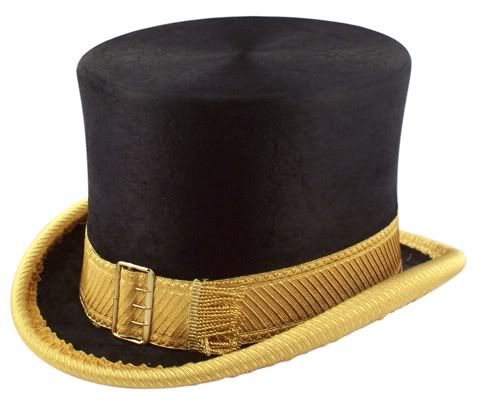
A modern Patey livery hat
The black wool felt mourning top hat is basically that; a top hat worn by funeral directors, undertakers and mourners at a funeral who cant afford a silk/fur melusine hat with a proper mourning band. Because it is made of wool, there is no shine to it thus indicating mourning. A lot of inferior toppers sold on the high street solely for the fashionable and trendy are of this type. The hat is felt-like and soft unlike the hard shell varieties above. One of the dead give-aways is to look at the brim binding which is simply machine sewn on and bent upwards like a homburg; a time saving method (see below example). It is also the choice for costume/fancy dress and Goths given its relative cheapness. There is also difference in quality where you get them from. From Christys they hat at least look similar to their fur melusine ones and these are the hats of choice for funerals, etc. The rest from the high street are only suitable for the vulgar use: i.e. fancy dress, fashionistas, etc. Because of its relative cheapness and large dimensions, wool felt is also the material of choice for making toppers with extravagant and ridiculous shapes and sizes, most notably the late Sebastian Horsleys infamous toppers, that would be impossible to make with the limited dimensions of fur melusine plush. Also, wool felt is simply blocked using an industrial press whilst other types require a shell to be blocked by hand before covering with the outer material thus making it less expensive and time consuming to make, hence the cheapness of it all.
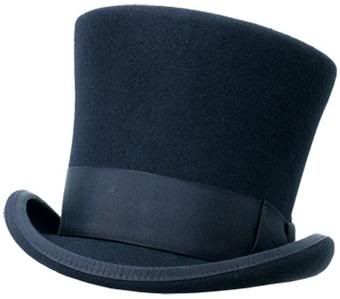
A modern wool top hat from a fancy dress costumers
Another type that must be mentioned is the non-collapsible shiny fabric/silk shell hat. They are a pale imitation of a collapsible topper and look rather ugly with sides all straight, side seams, flat brim and a rounded crown edge amongst other things. It is only appropriate for fancy dress or cheapskate magicians. These should be avoided at all costs
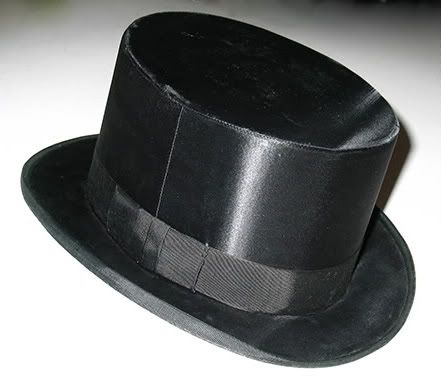
An abomination if there ever was one in the top hat universe
One thing also to avoid is getting a milliner to do a hatmakers job. David Beckham recently decided to go down this route for the Royal Wedding of Prince William and Catherine Middleton and commissioned the milliner Philip Treacy to make a top hat. The shape of the crown was at least traditional but the construction and other details were below par and it ended up looking like a fancy dress hat (it even had some sort of mourning band for the hatband similar to President Lincolns and so entirely inappropriate for a wedding anyway). It would most be suitable for a lady but for a man it is most definitely not (this point is made stronger by the fact that he never once wore it on top of his head so it became a mere fashion accessory with no practical use; I will not comment about how he wore his OBE )
.
Notes on finding and purchasing a top hat
We are only going to concentrate on the first three types since the others are sort of specialist toppers which we civilians are unlikely to wear or we should not bother getting (or are more or less already within the remits of the first three categories). These can be obtained via the same route as the first three anyway so no need to discuss them further.
There are a variety of sources where you can get these toppers. Knowing where can save you a few (hundred) bob
NB: Americans often use the term beaver hat in a very vague and wide ranging sense, sometimes referring to actual top hats made of real beaver fur felt or to silk or fur melusine ones! Be sure what it really is to avoid costly mistakes! Also, some toppers are made from rayon silk plush though this is very, very rare (the appearance is slightly greasy and blotchy like waxed hair).

A test hat made of rayon plush by Silk Top Hats before they used new silk plush
Silk plush top hat
Lets start on the silk plush topper (also known as a high silk). Firstly, these are (allegedly) no longer made because the last looms to make the silk plush was destroyed in 1947 and secondly, they stopped making silk toppers in 1959 when the silk plush ran out. Therefore, you can only obtain these vintage or second-hand.
There are several methods which you could obtain it: inherited, bought re-furbish and bought second-hand and then re-furbished if necessary.
If you inherited your topper, the chances are that it may not fit you. You may need to re-conform it to your head shape (that is, if the topper in question is in your hat size, otherwise it is not worth the hassle). To do this you must visit a hatter who will use the conformateur on your head to make a small scale template of your head on a piece of card then transfer it onto a formillion or conform block (these items themselves are very rare and go for c. £1000-3000 at auctions), heat the hat on a special heater to soften the shellac and mould the topper into your head shape. Regardless of how you obtain your silk topper, it needs to be reconformed if it doesnt fit you well.
Buying a re-furbished topper from a hatter is another way. The hatter would have repaired any damage and reconditioned the silk so it looks as good as new. However, if you do not have a couple of hundred pounds to spare, this is likely to be an expensive option given the next option available. The cost ranges from £500-2000+ from the main hatters of the realm. The larger the hat size, the greater it is going to cost you as large toppers are rare given that peoples heads were smaller in ye olde days than now. Indeed, this maybe your only option if your hat size is larger than 7 1/4. Sizes over 7 3/4 are rare and expensive.
If you could indeed try on the hat in person, there is one way of telling if it is the correct size. Firstly, you should wear it correctly; that being dead straight and not tilted to the side or towards the back. It should slip comfortably on without you having to force it down on your head too much. The hat should sit around an inch above the eye brows. Another way is to place your finger/s between your ear and the brim of the hat at the side of your head. If there is one fingers worth of space then the hat is the right size. If you can easily place two fingers in that space then the hat is too large. If you have difficulty inserting a finger at all or the brim actually touches the ears then that hat is too big. Of course, you may feel pressure points but these maybe due to the hat shape being different to your head shape and this can be sorted out with a conformateur.
Buying second hand can be surprisingly successful if you know where to look. You could get one in good wearable condition for £30-50! You first port of call is eBay where toppers crop up in a continuous line of auctions. Search for words like silk top hat, vintage top hat, antique top hat, etc and various combinations thereof. You will find around 20-50 listings. Ignore all the buy-it-now listings for now and concentrate on the auctions, especially those with very low starting bids. The best time not to buy on eBay is the few months leading to Royal Ascot as the prices would be severely inflated due to demand. You should wait until well after, especially winter time when there is no real demand for them. However, for the large hat sizes, you would probably only find buy-it-now listings as the seller (sensibly) does not wish to part with these for nothing. Sometimes, you can get a large hat for a significantly lower price if there is damage or flaws to it. If you go for such hats you must weight up the cost of restoring the hat.
Of course, before you bid or buy you must check the photos of the hat in question very carefully. You should ask yourself some questions:
- What is the hat size?
- What is the condition of the silk plush?
- Is there any wear to the edge of the crown?
- Are there any dents to the crown?
- Is the underbrim merino in good condition?
- Is the leather sweatband intact?
- What is the condition of the silk hatband and silk brim binding?
- Is the silk lining in good condition?
- Who, when and where was the hat made?
- Does it come with a hat box?
The first few questions are important. The hat size is vital as the topper must fit otherwise youre buying a white elephant. Sometimes, sellers are vague as to the size. Ask them to measure the inner circumference of the sweatband to make sure it is in your hat size. Note that most (if not all) toppers made in Europe go by English hat sizes. It is better if the hat is one size too big rather than one size too small as with a bigger size, there is room for adjustments with the conformateur and cork could be inserted into the sweatband to fit. A hat too small cannot be stretched or altered to a bigger size. This is because the crown of a top hat is made with a sheet of goss with the ends joined together to form a cylinder with a brim made up of several layers of goss for it to be as stiff as plywood stuck on so the size is fixed. Stretching it by force will damage the overall structure of the hat and would cause the brim to buckle or even the hat to break.
The next most important thing is the condition of the silk plush. Any rips or tears are going to be costly to repair. The edge of the crown is where a lot of wear can happen as this is the place where, through improper strorage, the silk can be rubbed and worn off. A good topper will have little, if any, wear to the crown edge.
Another common problem is with dents to the crown due to improper storage or handling. Normally, unless you actually handle the hat yourself, dents are not evident in photos unless the hat is well polished so the surface is flat enough and the hat is photographed with the flash on. Sometimes, the dents are minor and could be gotten away with if you just dry polish it so the nap does not go completely flat against the surface thus disguising the flaws. However, if there is extensive denting then the hat requires reblocking to remove them. To do this, the sweatband is turned out (or removed completely), the slip lining is removed, the opposing side where the dent is is then wetted with a sponge, the hat placed on a half-block secured onto a potance frame where an iron is applied on the outside. The heat and moisture causes the shellac to soften and be ironed flat against the half-block removing the dent in the process.
The underbrim is faced with what is called merino. It is wool twill. This part is where a lot of moth damage could occur and if there is it would need refacing if the damage is extensive. Another common problem is discolouration but this can easily be corrected with a bit of careful dye application and is not as important as moth damage which creates unsightly and noticeable marks. Refacing the underbrim will also require the brim binding to be replaced (as the silk ribbon would be damaged during the process of removal) and sweatband maybe affected so make sure you are willing to sacrifice those if you need to get it refaced.
If the leather sweatband is intact then that is a bonus. Replacing the sweatband is relatively cheap. If a few stitches are loose then that can easily be repaired. A good sweatband is a must as it is the only thing protecting the hat from sweat. A badly installed sweatband would enable sweat to seep onto the shell which soaks it up and weakens the shellac and hat. Also, if the sweatband requires replacing, make sure the leather used is the same thickness as the original as a thicker sweatband can cause the size of the hat to shrink a little. A hat slightly too large for your head can have the size reduced slightly by either installing a thicker sweatband or having the original sweatband drummed. Another way would be to stick foam (or better, cork) behind the sweatband but this is only a temporary measure and if the hat is too big it would not sit well and be likely to slip off.
The toppers upperbrim is most often of the same silk plush as on the crown but sometimes it can be of grosgrain silk (sometimes referred to as a petersham brim.) This itself is not bad but ideally, the brim should be silk plush which looks far better.
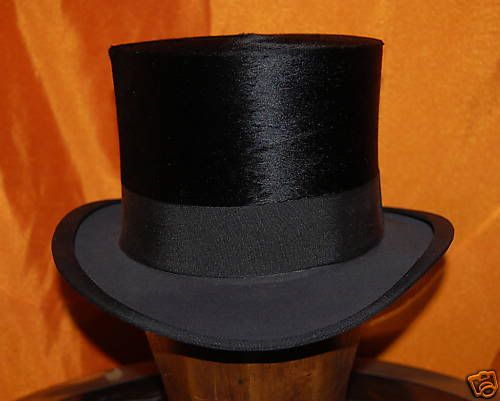
A vintage Dutch topper with a petersham brim
The silk hatband and brim binding also can be replaced if damaged. Sometimes the silk lining is stained but since this doesnt affect the appearance outside of the hat then it is not important.
Another important point to look at is the brim curl. The correct/proper brim curl is that the fore and aft of the brim should only be curled very tightly, almost like the edge is folded in on itself with 1/8″ turning flat against the upperbrim, but the sides should be curled inwards almost 180 degrees with a wide turning. This is known as the dOrsay curl, named after Count dOrsay, a French dandy, and is extensively used for toppers and bowlers alike. The silk binding should be less on top and more on the underside so the fore and aft shows only a piping width of silk binding on the top but the sides show a wide section of ribbon as the underside is turned up to expose most of the ribbon (but note that some hatmakers do it slightly differently). This must all be hand-stitched. Inferior silk toppers are simply machine stitched so you would see the machine stitches clearly and are simply bent upwards without a sweeping curl. For a comparison, look at the brim of the silk topper in the second photo above and compare it with the wool one (8th from above). If the brim binding is to be replaced, make sure it is replaced with pure silk grosgrain/petersham ribbon as rayon does not look right as it is thicker and more stiff and the light does not reflect on it well. If the hatter in question could not source silk ribbon then you should inform them that Mokuba (a Japanese ribbon maker with outlets in New York, Paris, Toronto and Tokyo, etc) have black pure silk grosgrain ribbon in various widths that are exactly the same as the silk grosgrain ribbons of yore. The part number is 20000 and it is called, by them, silk taffeta ribbon, colour no. 3. For a detailed explanation of how the brim binding is replaced, see this blog post by torontotophats: http://torontotophats.wordpress.com/2011/10/26/how-to-replace-a-damaged-brim-binding/.
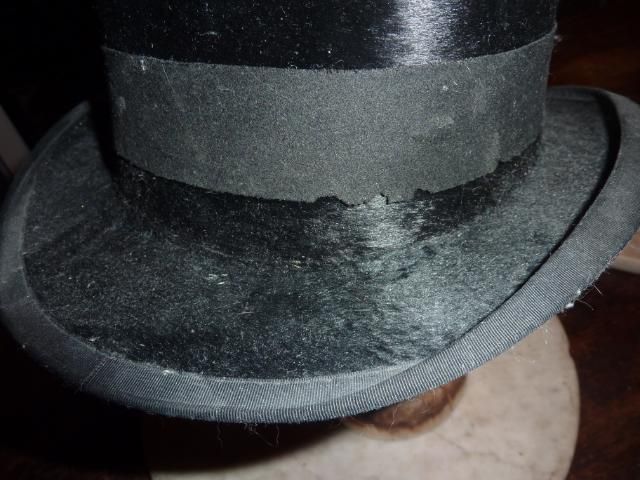
A different style of binding where a slightly wider ribbon is used and instead of turning the edge in on the upperbrim to create a narrow binding, the ribbon is sewn flat onto the upperbrim further away from the edge.
It is said that good silk toppers are marked in the lining with the words extra quality so if it is then that is a bonus. Famous names to look for are Herbert Johnson, Lincoln Bennett, James Lock & Co., Henry Heath and Patey. However, dont be confused by brand names and labels; you are looking for a good hat that fits and not a flawed hat with a name on it.
And do not be trapped by provenance; a topper worn by a former Prime Minister or a King may sound magnificent but if it doesnt fit you or is battered then it is not really worth (the few hundred/thousand more pounds it adds to the final price plus insurance) buying it to look at, although if it fits, is in good condition and you have the money, there is no reason why not in order to save it being put in captivity by a collector who wouldnt care much to wear it as it was intended for.
Other points to consider are the height and shape of the crown but this is really personal in preference. Note that there are two weights for toppers: town weight and country (or hunting) weight. The former is very light and is made of a single sheet of goss covered with silk plush. The latter is quite heavy and is made up of many layers of goss covered with silk plush. Sometimes, hunting toppers have a piece at the back that cups the back of the skull and/or have a quilted sweatband with a drawstring tape so the topper stays more securely on the head.
Finally, if it has a hat box, check to see its condition as sometimes you may have to discard it as it is too damaged to keep a topper in. A good leather top hat bucket with key and strap intact would be a real score. Note that a new leather bucket would cost you £1200+ so you must really get a vintage one instead!
In regards to top hat boxes, getting a top hat bucket would be best but if you cannot afford one or cannot source a good vintage one (with a working lock and key) then you can opt for an ordinary modern one. There are several types including an average card hat box. Locks sell a sturdy top hat box made of stiff cardboard (stiffer than their normal hat boxes) for those on a budget. Whilst these are good for storage, they are not necessary good for heavy travel purposes. Pateys sell a good hat case specifically for toppers. This not the traditional bucket or the card hat box but a good strong case. It is like a suitcase made of wood and leather with combination lock. The leather case is perfect for heavy transportation of your topper (especially aboard) as it is a solid square case. Make sure that the hat box/case you choose does not allow the topper to move about during transportation. Also remember to protect the crown from rubbing or touching the sides of the box but placing a sheet of high quality packing paper over it which would avoid spoiling the plush. And make sure that the topper actually fits in the case as I have noticed that high crown (6 1/4″) toppers can only just fit the Patey case with the crown pressed against the inner flap (they could do with installing the flap 1/4″ higher to give the crown some clearance space) but as far as I have experienced, the crown is fine as long as you do not insert bulky material above the compartment or pocket which could damage the crown if you force the lid down. Another way would be to remove the flap altogether and not use the pocket for anything then there is plenty of space.
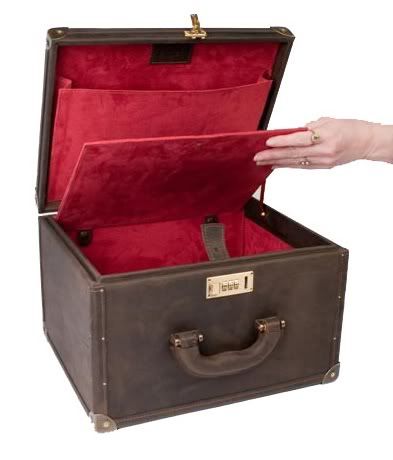
A Patey wooden frame leather top hat case
If youre not going to travel much with your topper and dont want to invest in a hat box then you could make a hat box yourself using an old cardboard box. Make sure it is slightly larger than the hat, fashion a lid, make four triangular brackets out of strips of the card and stick them to the sides of the box near the top so that the hat is suspended. You can add additional packing material such as bubble wrap (but dont overdo it!) and loosely wrap the hat in a large silk scarf before placing inside the box (to avoid the plush rubbing on the packing material) followed by a layer of packing paper and the lid which is what you should do if you are going to send the hat through the post.

Example of how a makeshift top hat box can be made. With packing material for transportation / postage.
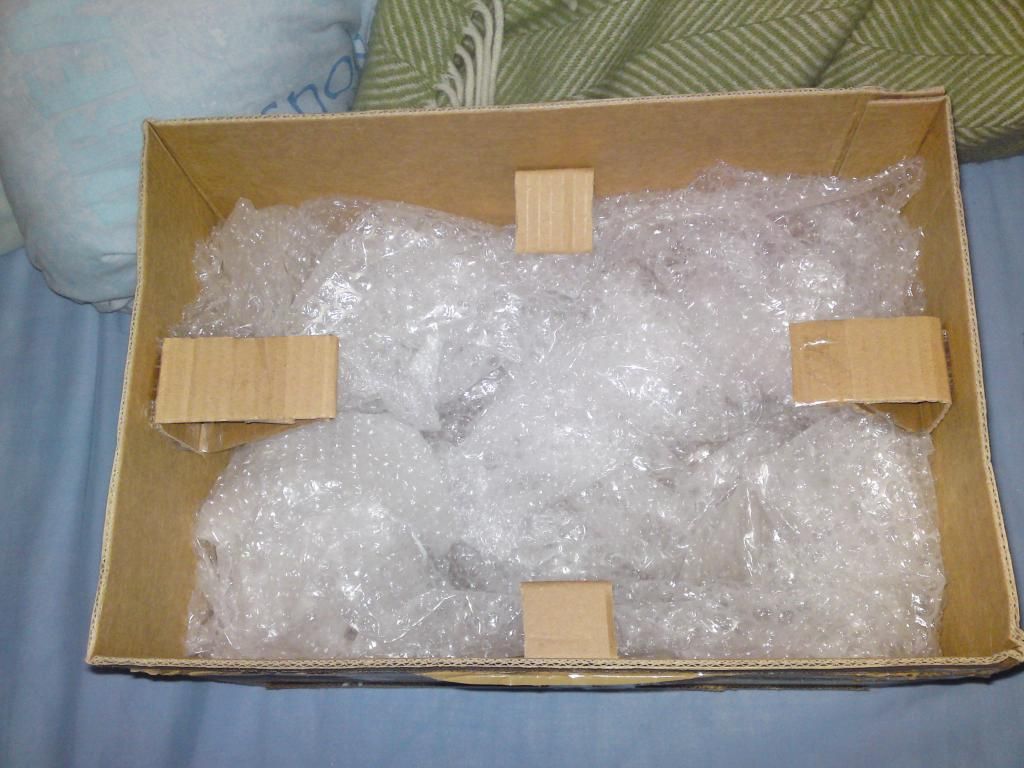
Top view. Note the brackets for the side of the hat are lower to take into account the rise of the brim curl.
If the topper has ticked all (or most) of the right boxes then set yourself a limit and bid on it! Bear in mind whether you need some restoration work done to it after you received it. In regards to restoration work, there are several hatters that do this, most notably Ascot Top Hats, Lock & Co. and Pateys. For a full refurbishment service at Pateys it would cost you £250 or so which is reasonable but that service is for when the hat is literally falling apart and if you followed my advice you shouldnt have bought such a topper in the first place! You should entrust renovations to English firms as they have the regular experience and expertise of silk topper renovation that American hatters do not (save maybe replacing the sweatband, etc). If you have a Lock hat then Locks might be able to do it for cheaper given that it is one of theirs.
Other good places to get a second-hand one are at charity shops or auctions. Go to ones in wealthier areas and you could grab one cheaply. Antique and vintage clothing fairs are also a good place where they crop up. The advantage here is that you can examine the goods in the flesh and try the hat on for fit. You must rely on your haggling skills to get a good price. It is also good to go to these places to actually handle a real silk hat so you know what one looks and feels like which would help you in future at selecting and scrutinising potential toppers that you wish to buy.
You may, of course, come across a silk plush topper in a colour other than black, such as grey or even brown. A very dark brown is known as fly wings black and is almost black unless examined closely. These, of course, are extremely rare and even if they dont fit you, it is worth getting them for the resale value alone! I have yet to find someone who possesses a grey silk hat but I know that Pateys and Locks have an example each. Expect these to cost somewhere in the region of £2000
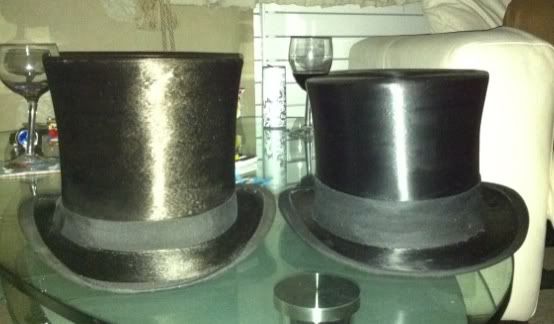
Cooksey & Co. fly wings black silk topper (left) with a black silk topper (right) in the possession of Mr Zack Pinsent

An extremely rare white (i.e. grey) silk top hat by Lincoln Bennett, currently in the collections of Patey. Photo by Ms Rebekah Roy on stylist stuff.
There is another (possible) avenue of relief for those with large heads that cannot find a vintage silk plush topper cheap enough. Two top hat makers in The Netherlands claims to have access to what I assumed was old stock silk plush (but I have heard say that there are still one or two looms still weaving silk plush and it might be from one of these that he gets the silk plush from though it is odd that none of the main hatters of the realm seem to have caught wind of this potentially profitable commercial avenue and exploited it!) but I have since found out from them that it is new silk plush, or so they claim! They are Ton Meewuis and Mark Spoorenberg of the confusingly almost identically named Silk Top Hats and Silk Top Hat respectively. I have to warn you that I have yet to verify their claims as I have yet to examine the hats in question to know whether they are genuine silk plush but if it is real then there would finally be relief for those with large heads that cant find/afford vintage silks in their size! If you have one of their hats, please drop me a line as I would really love to see them in the flesh.
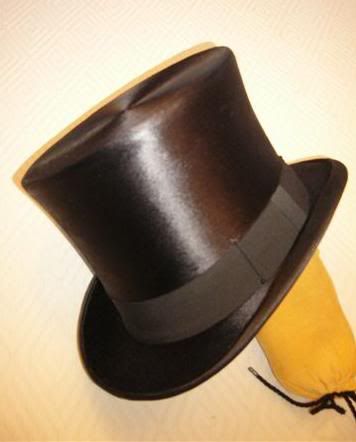
A new silk plush top hat made by Silk Top Hats
Ive also heard rumours of a hatmaker called Massimiliano Amicucci (who makes for films and theatre, recently making the toppers for the Top Hat production in the West End) making silk plush toppers (there is this intriguing video on YouTube and going by how the light reflects the tip of the hat, it is plush of some kind: http://www.youtube.com/watch?v=ejfbUKmSbpM).
Again, I have yet to confirm this as I havent looked into it properly yet.
Once you have your topper, you should brush the hat with a top hat brush and polish with a velvet pad. Do not use steam as that can damage the silk plush.
Fur melusine/felt top hat
If you cant find a good silk topper (most likely because you have a very large hat size) then the next best thing is to get a fur melusine topper (melusine as in fur with a directional nap, not felt which is flat like on normal hats such as trilbys, fedoras, bowlers and homburgs). These are available at quite affordable prices and are well made. The fur is made in a way that mimics the nap of the silk plush and can be polished to a certain degree. The colour is closer to Oxford grey than jet black given that the light reflects on it differently to silk. It also has a fuzzy look and feel to it. The first top hats were made with beaver fur felt before silk replaced it. Fur melusine hats are heavier than silk because the shell is of blocked wool felt covered with the fur plush, which was exactly how toppers were made before the invention of the goss-layering method.
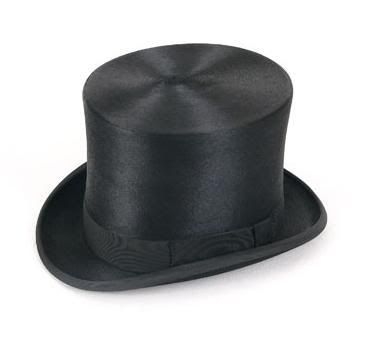
A modern Christys fur melusine tall crown topper
All the hatters of the realm supply these in a range of prices. They are sold in two crown heights and the price is the same regardless of hat size. It is also a good investment if you wear a topper very often and would like a different texture topper for a change or you are going out in the country and do not wish to damage your precious silk topper.
The cheapest place to get a fur topper is Christys of London. They also sell the grey fur felt toppers for even cheaper. In my opinion, I would eschew the black mourning band and go for a narrow silk hatband with bow and brim binding of the same colour as the hat. This looks far more elegant than the current done-to-death set-up of light grey hat, dark grey brim binding and black wool band which looks muddy in my honest opinion having three clashing colours. Also, mourning bands are so-called because originally they were for mourning (or maybe a reduced version of the proper wide ones) and it really seems illogical to even wear one at all with normal top hats but everyone has forgotten what and why its there in the first place and we are stuck with this set-up (no one will blame you for wearing a mourning band or think that you are in mourning now that the significance is lost but still, a silk band looks far better). It is also a solecism to have a grey topper, associated with races and fun-in-the-sun summery occasions, with a mourning band installed. I think it may be a cost cutting exercise more than anything else (making and installing a narrow wool mourning band is far easier, quicker and cheaper than making a grosgrain ribbon hatband with bow.)
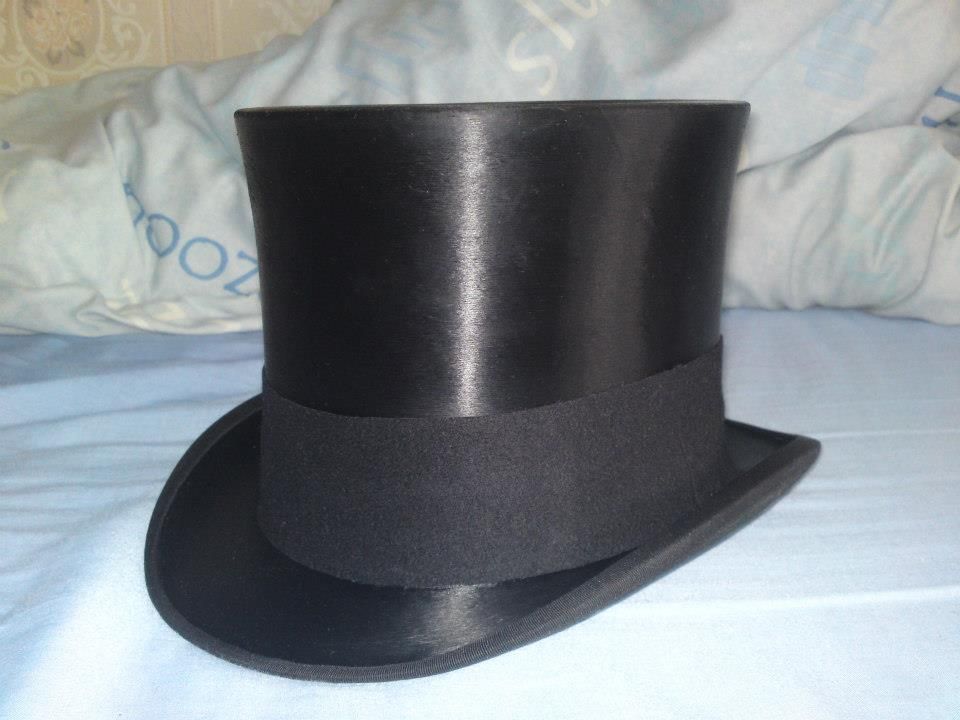
A 2 1/4″ wide wool mourning band installed on a silk topper by H. B. This one is made by me and is cut on the bias so it can be removed easily. It slips over the silk grosgrain hatband so you dont have to remove that. This wider than usual mourning band would be suitable for mourning family and friends (though, of course, I very much doubt there are many funerals these days that demand formal mourning dress be worn!)
For the traditional wide black wool felt mourning band on black toppers with a row of silk buttons at the side these are as rare as hens teeth and you could possibly get one of the hatmakers to make one for you. Youll need to hand them your hat as these things can only be made bespoke as each hat is different in crown shape and the band needs to hug the crown with no lumps or folds:

A 4″ wide formal wool mourning band. Made by me. This one would be suitable for a Ceremonial or State Funeral (where morning dress would be demanded.)
If you do get one, make sure that you do not have the band permanently installed on the hat as it might leave a mark on the plush as well as attract moths. Take it off after use.
If you want something special and have the money you may wish to consider ordering a bespoke fur melusine or grey fur felt topper from Pateys. You can specify the crown shape, height, finish, binding, etc as well as the weight. They can also make it the traditional way of layering goss over a hat block before covering with fur melusine, beaver or felt and then trimming and finishing. The shell would be very hard and stiff (and I imagine could be stood upon like original riding toppers).
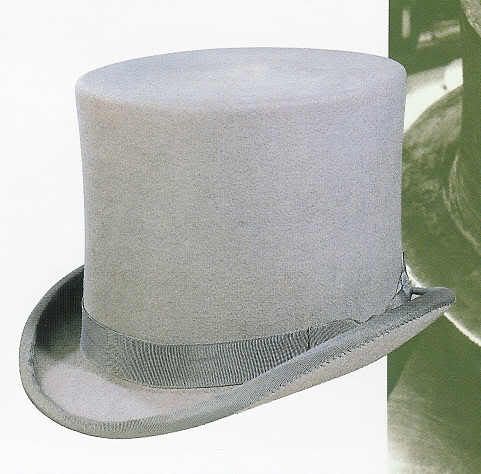
A modern Patey bespoke grey fur felt top hat, similar to what King George V wore on his visit to Ireland
Another source of bespoke fur melusine toppers is Ascot Top Hats who can do them in colours other than black. A good choice would be grey to mimic the original grey silk topper that was replaced by fur felt after the war.
Black cloth/silk opera hat
Black silk opera hats are still being made and can be obtained relatively easy (though the main hatters of the realm seem not to advertise them). Your first port of call is eBay, especially German eBay (which seems to have hundreds!), as there are a few vintage ones that crop up now and again. You can probably only get a grosgrain one this way as most modern opera hats are made using satin (sometimes using the inferior kind).
Check that there are no tears to the outside silk and the inside lining. Most opera hats have no leather sweatband so the inside can wear out very quickly.
A satin opera hat can be ordered from one of the hatters of the realm or bought from certain online shops. If you are taking the latter route make sure you do not inevitably order a fancy dress looking one! Indeed, some modern ones look rather horrid even thought they are probably made correctly. Look at the shine of the satin. It should look like a highly polished silk plush top hat and not matt. Also, the brim curl and all the details I have outlined for silk plush hats has to be correct otherwise you might as well get a vintage one.
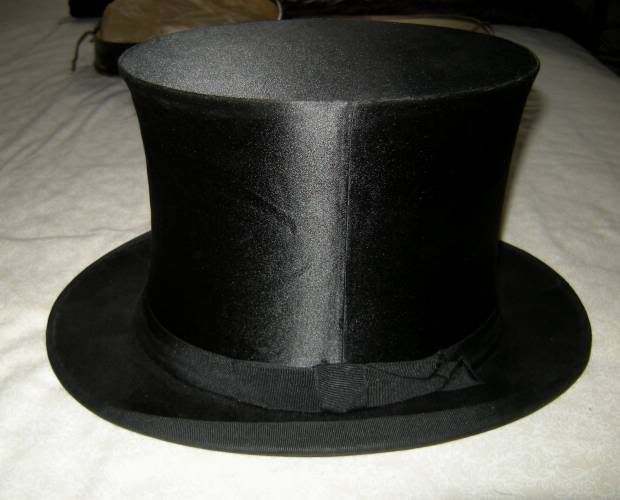
A vintage Henry Heath(?) silk satin opera hat
However, since you would probably be paying something in the same region as a normal fur melusine topper, it is probably not worth the money (unless you cannot find one in your size of course.)
A wool merino cloth opera hat (in black or midnight blue) is just as appropriate for white tie however you would probably never find one vintage as they are extremely rare as the silk versions are more popular. If you want one, it would probably have to be bespoken or you would have to be incredibly lucky on eBay, etc.
Price rises
Ever since writing this article in 2009, I have noticed a sharp rise in silk top hat prices (as of 2011).
Any silk topper that is a size 7 or lower you can easily get for under £100 in fairly good condition. However, as you go up in size the prices go up steeply. A 7 1/8 can be had for under £150 as you may for a 7 1/4 for under £200 but at 7 3/8 the price shoots up to around £300+. The reason for such inflation is because the stocks of silk top hats for larger heads are running low and as the years roll by it becomes more difficult to get one any cheaper.
Therefore, my advice is that if you really want a silk topper, now is the time to invest in one because in a few years time the prices could go way beyond what they are currently now and you might never be able to get hold of one. If you are assembling your morning dress ensemble, the first priority is not the bodycoat, trousers or waistcoat, it is now the silk topper.
As for the condition, any will do, even if there are dents, etc. If the price is lowered because of the damage, it is best to get it now and save up to refurbish it than wait for one in good condition that could cost more than the damaged topper plus reconditioning fees. Recently, a 7 3/8 topper came up on eBay for £100 buy-it-now. There was damage to the plush, etc. The reconditioning charge would probably be around £195 + VAT through Pateys. Was gone in just a day. Another in good condition was put up for £285 buy-it-now (down from £385). This is actually a good deal considering the current prices. Therefore, it is no longer the time to be picky. Even if there is damage, go for it if the price is good and judging on what the costs for reconditioning it in the future would be likely.
Currently, the price range for a silk topper ranges from £30 (for a small, battered, but sometimes decent if youre lucky, one) up to £3000+ (for large sized/rare ones).
Hatters of the Realm and beyond
Here are a list of hatters that stock or make top hats. As I said, one should shop around and compare prices and get recommendations. Note that with some common-sense, you do not need to fork out a fortune for a topper. To all intents and purposes, since you can wear a black silk topper to any formal event bar one or two, it is best to focus you attention to obtaining such as you only really need one that will be suitable and appropriate for all. Thus, grey toppers and opera hats can be saved for a time when you have money to spare.
NB: this list is not exhaustive and the information is valid as from April 2013. Inclusion in this list does not mean I personally endorse any of these hatmakers/hatters. However I do try and list ones that sell decent and vintage toppers that can be worn in actual situations and not as mere costume. I have removed the prices as they would keep going up and I dont want to keep updating all the time.
James Lock & Co.
Sells fur melusine toppers in two heights as well as grey drab shell toppers. Renovation service and vintage silk toppers for sale. Can re-conform and repair hats.
Bates Hats
Sells fur melusine and grey toppers.
Christys
Sells black fur melusine and grey felt toppers.
Ascot Top Hats
Sells Christys (and others) and refurnished vintage top hats. Can re-conform and restore hats. Since 2010, they can now make their own bespoke top hats out of fur plush/melusine in a variety of colours and other hats to order and have expanded their range to include opera hats and other novel ones.
Pateys
Makes and sells bespoke fur and re-furbished vintage silk top hats. Renovation service available. Can re-conform and repair hats. Also sells a bomb-proof wooden leather case for toppers.
The Silk Top Hat Company
Basically, a sister site of Pateys dealing specifically with silk hats. They also list their repair charges clearly.
Silk Top Hats
Dutch hatter and hatmaker Ton Meewius. Sells various vintage silk and drab top hats from the continent. Can renovate hats. Also claims to make new silk toppers (TBC). Also stocks vintage top hat buckets.
Silk Top Hat
Not to be confused with Silk Top Hats, this site is run by Mark Spoorenberg who was a hatmaker during the heydays of silk top hat making in the Netherlands and makes his hats under the name Burton (again, do not confuse with the Burton, the famous suit manufacturer in England). He seems to be associated with Ton Meewuis but is independent. He makes new silk top hats (TBC) to order and in apparently any colour though I have yet to find out for how much. The style of his toppers seems markedly different from standard: he uses satin for the underbrim and no brim binding.
Vintage Toppers
Specialist silk top hat dealer. Stocks two qualities of toppers: ones in perfect condition and ones that need some renovation or have slight flaws. Also has a renovation service.
The Top Hat Shop
Specialist silk top hat dealer. Also sells top hat buckets/boxes and has a renovation service.
The Sporting Study
Specialist top hat dealer who also sells other racing-themed paraphernalia.
Hetherington Hats
Specialist top hat dealer. Can re-conform and repair hats.
The Vintage Tack Room
Sells second hand vintage town and hunting weight silk and fur toppers. Was Field and Country Antiques but under new name and management since April 2013.
Oliver Brown
Sells renovated vintage toppers as well as modern fur melusine (from Christys I think). You must visit or call their London shop personally.
.
Glossary
Here is a short glossary of terms which are mentioned above as well as additional useful terms one may come across. Note that it is not meant to be comprehensive and some terms are open to interpretation.
Airhole: a small hole in the centre of the tip of the crown with a gauze fitting to allow the heat from the head to escape in some top hats
Beaver fur/felt: the old form of plush used to cover top hats in the past but now mostly used to cover ceremonial hats, hence beaver hat; often used mistakenly by Americans to describe silk plush
Beaver hat: the term used for all hats (including top hats) made with a covering of beaver fur/felt in the past
Bell crown: a top hat crown shape; the width of the tip is wider than the base of the sides
Boater style top hat: a top hat with a straight crown of around 4″ tall with a flat brim
Bow: a decorative feature on the hatband or at the base of the seam of a sweatband
Brim: the part that extends out of the crown of a hat at all sides in one piece
Brim binding: the ribbon that binds around the edge of the brim
Brim block: an oval wooden block with a hole in the centre used to iron the brim on the crown of a hat
Brim curl: the degree and style of how the brim edge is curled inwards towards the crown of a hat
23-08-2013, 17:48 geschreven door Guy 

